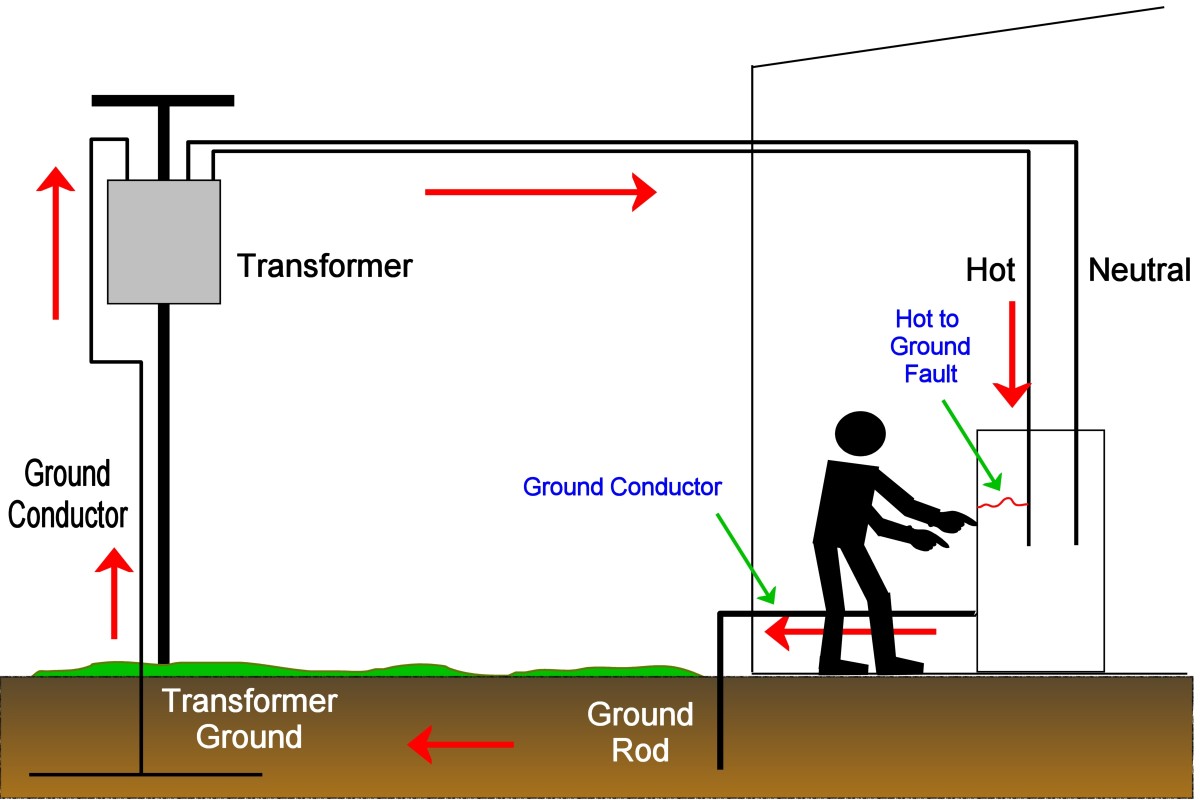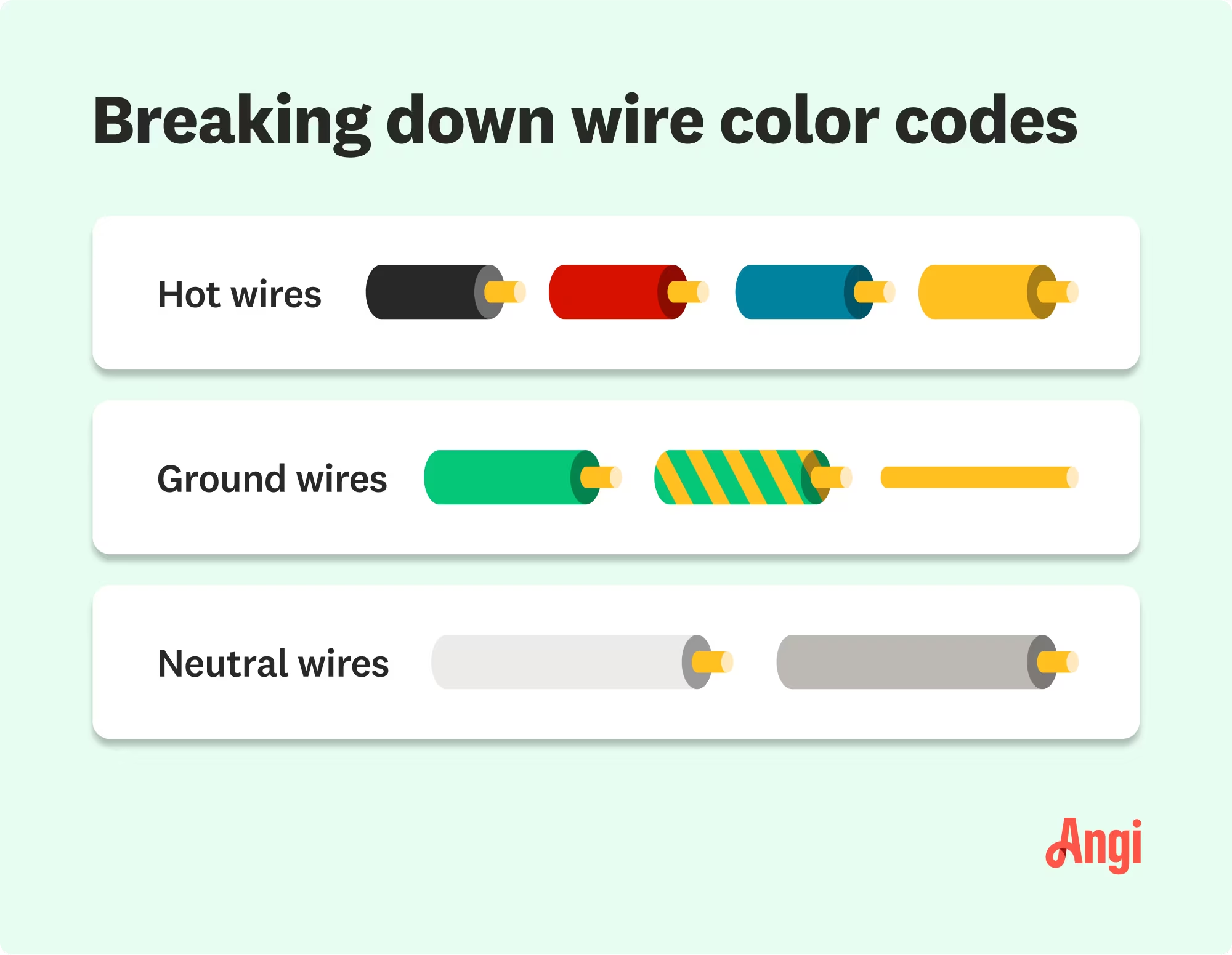What Everybody Ought To Know About What Does VOM Mean In Electrical Wiring

What Is Electrical Grounding? Waypoint Inspection Property
Decoding VOM in the Electrical World
1. What's the Buzz About VOM?
Ever stumbled across the acronym "VOM" in an electrical wiring discussion and felt like you were suddenly reading another language? Don't sweat it! It's a common term, and understanding it is a key step in becoming more confident around electrical projects. VOM stands for Volt-Ohm-Milliammeter. Yes, it's a mouthful, but the functionality is much simpler than the name implies. Think of it as the Swiss Army knife of electrical testing.
In the realm of electrical work, precision is paramount, and a VOM provides exactly that. It's the tool that lets you understand whats really going on in your circuits. A visual inspection can tell you if a wire is connected, but a VOM reveals the voltage, current, and resistance, helping you diagnose issues and ensure safety. Ignoring this stuff is like flying blind — definitely not recommended!
The term "VOM" itself is a bit old-school these days. You'll often hear folks (oops, almost slipped into prohibited language there!) refer to it as a "multimeter," which is essentially the same thing but with a more modern ring to it. But even with the name change, the function is the same. It's the trusty device that lets you measure voltage, resistance and current.
So, the next time you hear someone throwing around the term VOM, or multimeter, you can nod sagely and know exactly what they're talking about. It's all about voltage, resistance, and current, the holy trinity of electrical measurement!

The Versatile VOM
2. Voltage, Ohms, and More
Okay, so we know VOM stands for Volt-Ohm-Milliammeter, but what does that actually mean in practical terms? Well, it means this little device can measure several critical electrical characteristics. Let's break it down:
Voltage: This measures the electrical potential difference between two points. Think of it as the "pressure" pushing electricity through a circuit. Measuring voltage ensures the right amount of power is reaching your devices and can help identify voltage drops or spikes.
Resistance: This measures the opposition to the flow of electrical current. Every component in a circuit offers some resistance. Checking resistance can reveal short circuits, open circuits, or components that are failing.
Current (Amps): This measures the rate of flow of electrical charge. It's like measuring the amount of water flowing through a pipe. Measuring current helps ensure a circuit isn't overloaded and can help diagnose excessive current draw.Beyond those core functions, many modern multimeters also include features like continuity testing (to see if a circuit is complete), diode testing, and even temperature measurement. It's really a super useful piece of kit.

Analog vs. Digital
3. Decisions, Decisions
Once youre ready to embrace the VOM life, you'll encounter another choice: analog or digital? Analog multimeters use a needle that moves across a scale to display readings. They are often cheaper and some electricians prefer them for their ability to show changing values more visually. Digital multimeters (DMMs) display readings as numbers on a screen. They are generally more accurate and easier to read, especially for beginners.
For most DIYers and hobbyists, a digital multimeter is the way to go. They're more precise, less prone to errors, and often have more features. Plus, the auto-ranging feature on many digital models eliminates the need to manually select the correct measurement range, which can be a real lifesaver if youre just starting out.
However, analog multimeters still have their fans. Some experienced electricians argue that they provide a better sense of the flow of electricity and are better for detecting rapidly changing signals. They also don't require batteries, which is a plus. Ultimately, the choice depends on your personal preferences and the types of electrical work youll be doing.
Regardless of which you choose, make sure it is rated for the voltages and currents you will be testing. It's better to be safe than sorry in the electrical world.

What Does Ground Mean In Electricity
Safety First
4. Electrical Safety 101
Working with electricity can be dangerous, so safety should always be your top priority. Before you even think about grabbing your VOM, make sure you understand the basics of electrical safety. That means turning off the power at the breaker before working on any circuit. Trust me, getting shocked isn't a fun way to spend an afternoon.
Always double-check your VOM's settings before taking a measurement. Using the wrong setting can not only give you inaccurate readings but can also damage your VOM (or worse!). Make sure your hands are dry and you're not standing in water when using a VOM. Water and electricity are not a good mix.
If you're not comfortable working with electricity, don't! It's always better to call a qualified electrician than to risk injury or damage to your home. There's no shame in admitting you need help.
Finally, wear appropriate personal protective equipment (PPE), such as safety glasses and insulated gloves, when working with electricity. A little bit of protection can go a long way.

Wire Color Code What Each Means Angi
Practical Applications
5. From Troubleshooting to Testing
So, when would you actually use a VOM in the real world? Well, the possibilities are almost endless. Here are a few common scenarios:
Troubleshooting a faulty outlet: If an outlet isn't working, a VOM can help you determine if it's receiving power. You can use it to check the voltage at the outlet and see if the breaker has tripped.
Testing a battery: A VOM can tell you if a battery is still good. Simply measure the voltage and compare it to the battery's rated voltage. A significantly lower voltage indicates a dead or dying battery.
Checking continuity: A VOM can be used to check the continuity of a wire or circuit. This is useful for finding breaks in wires or confirming that a circuit is complete. Think, simple stuff, like a cable.
Identifying short circuits: By measuring resistance, a VOM can help you identify short circuits. A very low resistance reading indicates a short circuit.Basically, anytime you're dealing with electrical circuits and need to know what's going on, a VOM is your best friend. It's an indispensable tool for anyone working with electricity, from professional electricians to weekend DIYers.
![[DIAGRAM] Electrical Symbols On Wiring Diagrams Meanings How To Read [DIAGRAM] Electrical Symbols On Wiring Diagrams Meanings How To Read](https://www.edrawsoft.com/schematics/images/read-schematics-symbols.png)